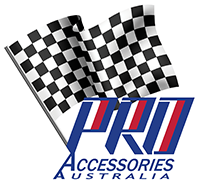Safety
Safety
Safety
Important Information: disregarding any of the safety precautions and instructions may result in tyre failure or explosion causing serious personal injury or death.
Tyres are the only part of your motorcycle that are in contact with the road. Safety in acceleration, braking, steering and cornering all depend on a relatively small area of road contact. It is therefore of paramount importance that tyres should be maintained in good condition at all times, and that, when the time comes to change them, suitable replacements are professionally fitted.
It is essential that you refer to your machine manufacturer’s handbook when buying and fitting replacement tyres. Changes in tyre size, type and construction should not be made without first seeking advice from the machine or tyre manufacturer, since fitting the wrong tyre may have an adverse effect on handling, safety and wear.
Avon motorcycle tyres are only for use on vehicles for which motorcycle tyres were originally specified by the vehicle manufacturer, any other use may be dangerous.
Motorcycle tyres which have been subject to use on rolling roads must no longer be used for subsequent, normal service. Use of Avon motorcycle tyres on a rolling road (Dyno) will invalidate the tyre warranty. All tests on rolling roads must be carried out with test tyres.
Avon motorcycle tyres is not responsible for abnormal wear due to suspension modifications and/or improper maintance.
Avon motorcycle tyres are not recommended for use if towing a trailer.
Avon motorcycle tyres are not recommended for use with a sidecar unless the tyre state "sidecar".
For fitment recommendations please see Avon Tyres – Motorcycle Data and Fitment Guide. All speeds stated in this brochure are subject to observance of the appropriate national speed limits.
Running In Tyres
When new motorcycle tyres are fitted for the road, they should not be subjected to maximum power until a reasonable ‘running in’ distance has been covered. 160 dry kilometers is the recommended minimum (discount any wet miles covered).
Tyres should then be visually examined and their inflation pressure re-checked before riding.
Select The Correct Type Of Tyre For Your Machine
Use combined information from owners handbook and tyre manufacturers fitmant guide, to fit the correct tyres which meet with the motorcycles requirements.
Pressures Are Vitally Important
Warning! Riding on any tyre that does not have the correct inflation pressure is dangerous. Keep your tyres inflated to the correct pressure for laod and speed as shown in your motorcycle manufacturer's hand book. Any underinflated tyre builds up excessive heat and may result in sudden tyre destruction. The correct inflation pressures for you tyres must be maintained as a minimum.
Pressures Testing
Test pressures at least once a week with an accurate tyre pressure gauge when tyres are cold and always before a long journeys. Do not "bleed" air off when tyres are hot as pressures rise due to heat but fall again when the tyres cool. When riding with a pillion/passenger we would recommend increasing pressure by 1-2 psi front and 2-3 psi rear.
Valve Cores And Caps
Loss of pressure may sometimes be due to valve cores not seating properly or being worm. Check valve cores, tighten for correct seating or replace as necessary. Always fit valve caps (finger tight) as they keep dust from the valve mechanism and act as an extra seal.
Tubeless Tyres
Valves should be kept in good condition and replaced when a new tyre is fitted.
Wire Wheels
Ensure that proprietay rim tape are in good condition: a protruding spoke head can damage a tube and cause a puncture.
Alignment
Ensure wheels are correctly aligned and inspect regularly. Be aware of your tyres through frequent visual examination and before any long journey. Worn tyres are more susceptible to damage and road holding is reduced in the wet. To maintain full stability it is advisable to change the tyre before the legal 1mm (1/32") remaing pattern depth (tread waer indicator) is reached.
Damaged Tyre
Damage which exposes the casing is dangerous and contravenes tyre legislation. Replace the damaged tyre immediately.
Stones
Remove any stones or nails which may become embedded in the tread of the tyre. If left they will eventually prenetrate through the casing and cause a puncture, leading to breakdown on the road or even an accident.
Oil And Crease
Rubber deteriorates when in contact with oil and grease. Remove ant oil and grease (including chain lube) from the tyre using a cloth silghtly damped with petrol.
Care Of Tubes
Repairs to tubes should ideally be carried out by an expert and should be vulcanised - hot or cold process. It is recommended that a new tube be fitted with a new tyre. Tubes which have given longservice become streched and when fitted with new tyres may fail prematurely because of creasing or thinning of the tube rubber. Tubes with several repairs should be discarded.
This category is empty! Please try another category or use our search function to find what you are looking for. If you require further assistance please contact us.
